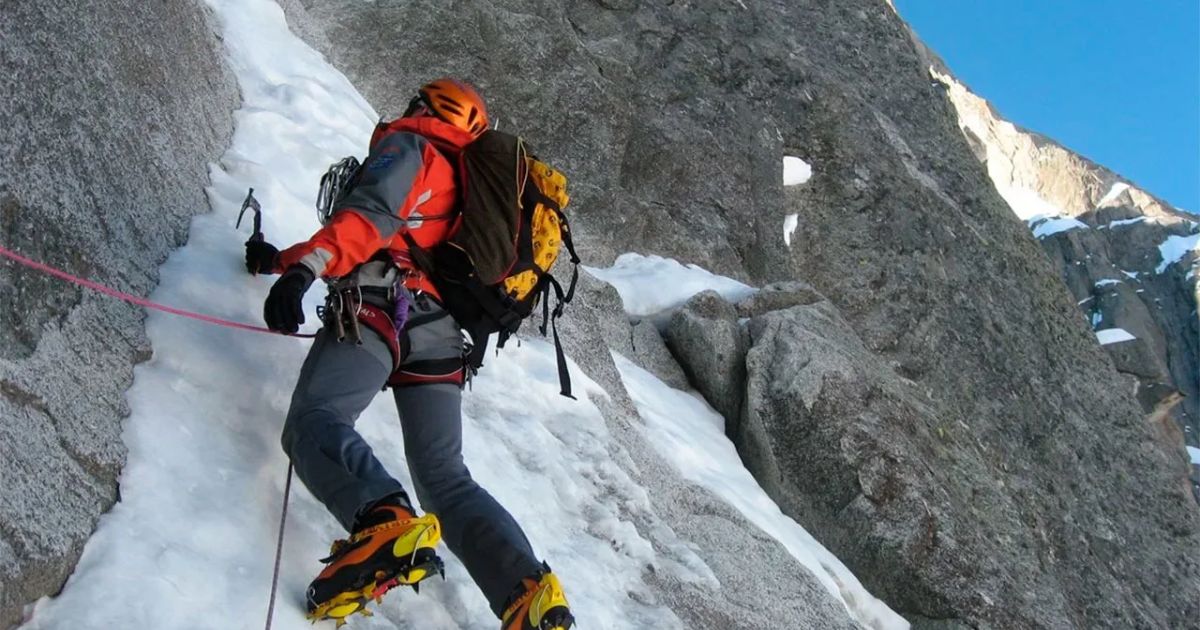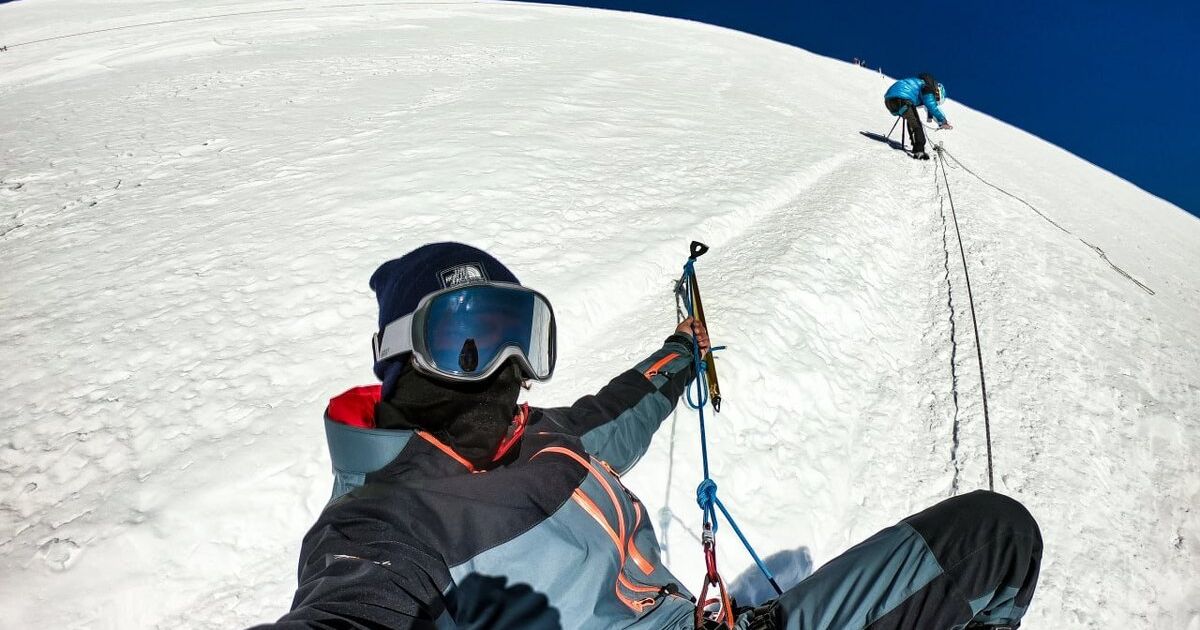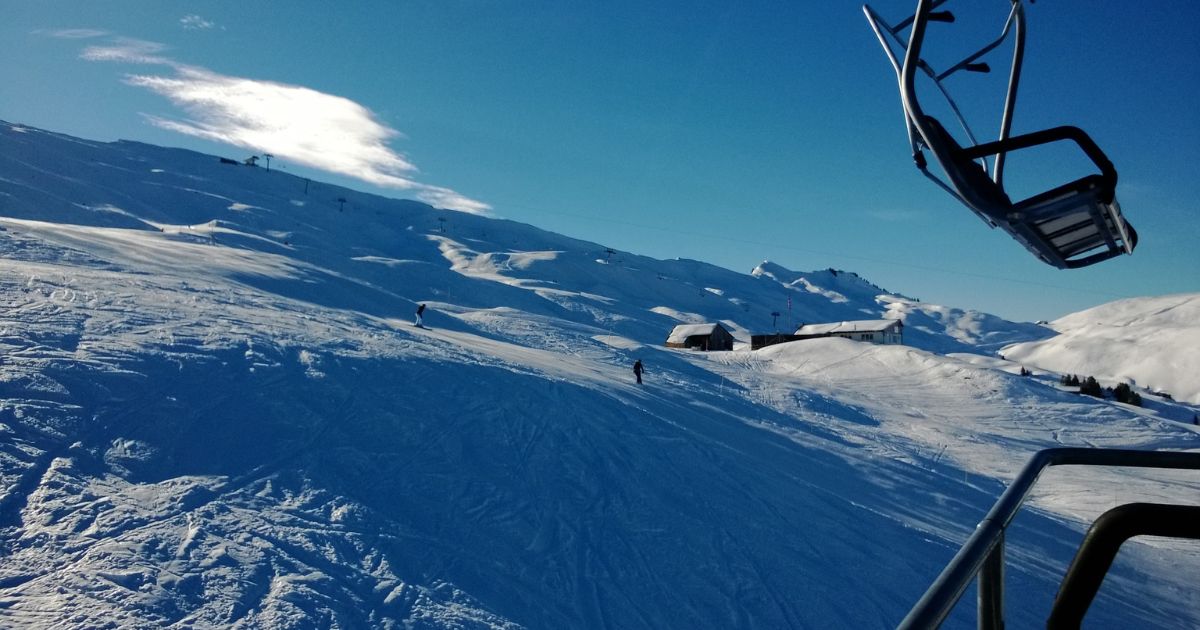Climbing Mount Everest, the world’s highest peak is an arduous and demanding endeavor that requires immense physical and mental strength. This majestic mountain, standing at an awe-inspiring height of 29,029 feet, presents numerous challenges that test the limits of even the most skilled and experienced climbers. From high altitude challenges to extreme weather conditions, each step towards the summit demands unwavering determination and resilience.
Additionally, climbers must possess exceptional physical fitness, and technical climbing skills, and undergo a rigorous acclimatization process to adapt to the unforgiving environment. Limited oxygen availability and the treacherous Khumbu Icefall further intensified the difficulty of the expedition. Furthermore, aspiring climbers must contend with the substantial costs and logistical challenges associated with organizing such a perilous journey. In this article, we will explore the immense challenges that make climbing Mount Everest an extraordinary and formidable pursuit.
Key Takeaways
- Climbing Mount Everest is extremely challenging due to the high altitude and harsh conditions, including low oxygen levels and freezing temperatures.
- Proper acclimatization and physical fitness training are necessary to prepare the body for the demanding conditions.
- Climbers need to possess technical climbing skills, such as rope techniques, navigation, ice climbing, and rock climbing.
- The acclimatization process is crucial for climbers to adapt to the extreme altitude and prevent altitude sickness.
High Altitude Challenges
What are the high-altitude challenges faced by climbers attempting to summit Mount Everest? Climbing Mount Everest is a feat that requires extensive high-altitude training and mental preparation. At an elevation of 8,848 meters (29,029 feet), Mount Everest is located in the death zone, where oxygen levels are extremely low and temperatures can drop to dangerous levels. The lack of oxygen in the air puts immense strain on the body, leading to symptoms such as dizziness, fatigue, and shortness of breath.
High altitude training is necessary to acclimatize the body to these conditions and improve oxygen utilization. Additionally, climbers must undergo mental preparation to cope with the physical and mental stressors of climbing at high altitudes, including extreme weather conditions, long periods of isolation, and the risk of altitude sickness. A combination of physical training, mental resilience, and proper acclimatization is crucial for climbers attempting to conquer Mount Everest.
Extreme Weather Conditions
Climbers attempting to summit Mount Everest face the challenge of navigating through extreme weather conditions. The mountain’s towering height and location in the Himalayas make it susceptible to unpredictable and harsh weather patterns. Here are some key aspects of the extreme weather conditions that climbers must contend with:
- High winds: Gusts on Everest can reach hurricane-force speeds, posing a significant risk to climbers.
- Extreme temperatures: Temperatures at the summit can drop to -40 degrees Celsius, making frostbite and hypothermia major concerns.
- Blizzard conditions: Heavy snowfall and whiteout conditions can make navigation treacherous and increase the risk of avalanches.
- Rapid weather changes: Weather conditions on Everest can change rapidly, catching climbers off guard and necessitating quick decision-making.
- Importance of proper gear and equipment: Mountaineers rely on specially designed clothing, boots, and equipment to protect themselves from harsh weather conditions.
Mountain guides play a crucial role in assessing weather conditions, ensuring climbers are equipped with the right gear, and making informed decisions to ensure the safety of their clients.
Physical Fitness Requirements
Navigating through extreme weather conditions is just one aspect of the challenge climbers face when attempting to summit Mount Everest; another crucial factor is meeting the rigorous physical fitness requirements. Mount Everest is the highest peak in the world, reaching an elevation of 29,032 feet, and conquering it demands exceptional physical endurance. As such, climbers must undergo a comprehensive training program to prepare their bodies for the demanding conditions they will encounter during the climb.
This program typically includes a combination of cardiovascular exercises, strength training, and endurance-building activities. Climbers focus on building strength in their core, legs, and upper body to handle the steep inclines and harsh terrains they will face. Additionally, aerobic exercises such as running, cycling, and hiking help improve their cardiovascular fitness, enabling them to sustain high altitudes and reduced oxygen levels. Overall, meeting the physical fitness requirements is essential for climbers aiming to conquer Mount Everest and requires a disciplined and dedicated training regimen.
Technical Climbing Skills
Acquiring proficient technical climbing skills is crucial for successfully ascending Mount Everest. These skills are essential for navigating challenging terrain and ensuring the safety of climbers. Here are five important skills that climbers must possess:
- Rope Techniques: Climbers need to be well-versed in various rope techniques such as tying knots, belaying, and rappelling. These skills are crucial for securing oneself and others on the mountain.
- Mountain Navigation: Climbers must have strong navigation skills to read maps, use a compass, and interpret the terrain. This is vital for finding the correct route and avoiding dangerous areas.
- Ice Climbing: As Everest has icy sections, climbers must be skilled in ice climbing techniques, including using crampons and ice axes to ascend steep slopes.
- Rock Climbing: Proficiency in rock climbing is necessary for tackling challenging rock faces and cliffs along the route.
- Crevasse Rescue: Knowledge of crevasse rescue techniques is crucial to safely navigate the treacherous crevasses that can be encountered on Everest.
Mastering these technical climbing skills is essential for climbers to overcome the difficulties posed by Mount Everest and achieve their ultimate goal.
Acclimatization Process
The acclimatization process is crucial for climbers attempting to summit Mount Everest due to the extreme altitude and thin air. Preventing altitude sickness is a primary goal of acclimatization, as it can be life-threatening. This is achieved through a gradual ascent, allowing the body to adjust to the decreasing oxygen levels and reduced air pressure. By acclimatizing, climbers give themselves the best chance of adapting to the harsh conditions and increasing their chances of a successful summit.
Altitude Sickness Prevention
To mitigate the risk of altitude sickness, climbers must undergo a process of acclimatization while ascending Mount Everest. Altitude sickness, also known as acute mountain sickness (AMS), can be a serious and potentially life-threatening condition. Here are some key measures climbers can take to prevent altitude sickness:
- Medicine options: Certain medications, such as acetazolamide, can help prevent AMS by promoting increased breathing and reducing fluid buildup in the lungs.
- Proper hydration: Staying adequately hydrated is crucial in preventing altitude sickness. Climbers should aim to drink at least 3-4 liters of water per day to maintain hydration and aid in acclimatization.
- Gradual ascent: Climbers should ascend gradually, allowing their bodies time to adjust to the decreasing oxygen levels. This involves taking regular rest days at higher altitudes to allow for acclimatization.
- Appropriate clothing: Wearing proper clothing, including warm layers and protective gear, can help maintain body temperature and prevent hypothermia, which can worsen altitude sickness symptoms.
- Monitoring symptoms: Climbers should regularly monitor themselves and their teammates for any signs of altitude sickness and be prepared to descend if symptoms worsen.
Gradual Ascent Importance
Proper acclimatization through a gradual ascent is crucial for climbers tackling the challenge of Mount Everest. As climbers ascend the mountain, the air becomes thinner, and the level of oxygen decreases. This can lead to altitude sickness, a potentially life-threatening condition. However, by taking the time to acclimatize to the increasing altitude, climbers can minimize the risks associated with climbing at high altitudes.
A gradual ascent allows the body to adapt to the changing conditions and build up red blood cells to carry oxygen more efficiently. This process, known as altitude acclimatization, helps reduce the chances of developing altitude sickness. Additionally, a gradual ascent allows climbers to become familiar with the effects of high altitude on their bodies, enabling them to recognize and address any symptoms before they become severe.
The benefits of a gradual ascent are numerous. It not only reduces the risk of altitude sickness but also improves physical performance and overall well-being. By allowing the body to adapt slowly, climbers can increase their chances of successfully reaching the summit of Mount Everest while minimizing the potential dangers associated with high altitude.
Adjusting to Thin Air
Successfully adjusting to the thin air at high altitudes is a critical aspect of the acclimatization process for climbers tackling the challenge of Mount Everest. Altitude adaptation is a gradual process that allows the body to cope with the reduced oxygen levels found at higher elevations. Here are five key factors to consider during this process:
- Slow ascent: Climbers must ascend gradually to allow their bodies to adjust to the thin air and decrease the risk of altitude sickness.
- Hydration: Staying well hydrated helps maintain blood volume and improves oxygen transportation throughout the body.
- Proper nutrition: Consuming a balanced diet rich in carbohydrates and proteins provides the necessary energy for the body to adapt to higher altitudes.
- Rest and recovery: Sufficient rest allows the body to recover and adapt to the oxygen deprivation experienced at higher elevations.
- Use of supplemental oxygen: In extreme cases, climbers may rely on supplemental oxygen to combat the effects of oxygen deprivation and aid in acclimatization.
Limited Oxygen Availability
Limited oxygen availability is one of the most significant challenges climbers face when attempting to summit Mount Everest. At high altitudes, the air becomes thinner, resulting in lower oxygen levels. This scarcity of oxygen can lead to a range of risks, including altitude sickness and cognitive impairment. Climbers must navigate these dangers while also dealing with the physical strain of breathing in such an inhospitable environment.
Oxygen Scarcity Risks
The presence of limited oxygen availability poses significant risks for climbers attempting to conquer Mount Everest. At high altitudes, the air becomes thin, making it difficult for the human body to function properly. To mitigate the effects of oxygen scarcity, climbers often rely on oxygen supplementation, which involves carrying portable oxygen cylinders and using masks or nasal cannulas to breathe in the concentrated oxygen. However, despite these measures, climbers still face potential dangers due to the limited availability of oxygen. Some risks associated with oxygen scarcity on Mount Everest include:
- Hypoxia: Insufficient oxygen supply can lead to hypoxia, a condition that can cause dizziness, confusion, and loss of consciousness.
- Reduced physical performance: Lack of oxygen can impair physical strength and endurance, making it harder for climbers to navigate treacherous terrains.
- Increased fatigue: Oxygen scarcity can lead to increased fatigue, making climbers more prone to accidents and mistakes.
- Delayed recovery: Limited oxygen availability can slow down the body’s recovery process, making it harder for climbers to adapt to the harsh conditions.
- Higher susceptibility to altitude sickness: Oxygen scarcity can increase the risk of altitude sickness, which can be life-threatening if not properly managed.
Climbers must be aware of these risks and take necessary precautions, such as acclimatization and proper use of climbing equipment, to ensure their safety and success on Mount Everest.
Altitude Sickness Dangers
Altitude sickness poses significant dangers for climbers due to the limited availability of oxygen at high altitudes. As climbers ascend Mount Everest, the oxygen levels decrease, making it challenging for the body to function optimally. This can lead to a range of symptoms, including headache, nausea, dizziness, and fatigue. In severe cases, altitude sickness can progress to High Altitude Pulmonary Edema (HAPE) or High Altitude Cerebral Edema (HACE), both of which can be life-threatening.
To manage altitude sickness, climbers may require oxygen supplementation to ensure an adequate supply of oxygen to their bodies. Portable oxygen cylinders are often carried by climbers to alleviate symptoms and prevent further complications. However, even with oxygen supplementation, it is crucial to monitor the climber’s condition closely, as emergency evacuation may still be necessary if symptoms worsen.
To illustrate the dangers of altitude sickness, the following table provides an overview of the symptoms and complications associated with different levels of altitude:
| Altitude (meters) | Symptoms | Complications |
|---|---|---|
| 2,500 – 3,000 | Mild headache | Nothing serious |
| 3,000 – 4,000 | Headache, nausea | Mild altitude sickness |
| 4,000 – 5,500 | Severe headache | High Altitude Pulmonary Edema |
| Above 5,500 | Severe headache, | High Altitude Cerebral Edema, |
| nausea, dizziness, | potentially fatal | |
| fatigue |
Climbers must be aware of the risks associated with altitude sickness and make informed decisions regarding their ascent. It is crucial to acclimatize properly and seek immediate medical assistance in case of any concerning symptoms.
Climber’s Breathing Challenges
As climbers ascend Mount Everest, they face the significant challenge of breathing at high altitudes due to the limited availability of oxygen. This can have a profound impact on both their physical and mental well-being. Here are some key factors related to climber’s breathing challenges:
- Hypoxia: The reduced oxygen levels at high altitudes can lead to hypoxia, a condition that affects the body’s ability to function properly.
- Acclimatization: Climbers need to allow their bodies to acclimatize to the thin air by gradually ascending to higher altitudes and giving their bodies time to adjust.
- Climber’s mental resilience: The lack of oxygen can cause cognitive impairment, affecting decision-making and judgment. Climbers need to maintain mental resilience to make sound choices in challenging situations.
- Impact on the local Sherpa community: The Sherpa people, who serve as guides and support for climbers, face increased risks due to their prolonged exposure to high altitudes and limited access to medical facilities.
With an understanding of the climber’s breathing challenges, let’s now explore the dangers posed by the treacherous Khumbu Icefall.
Dangerous Khumbu Icefall
How treacherous is the Khumbu Icefall? The Khumbu Icefall, located on the Nepalese side of Mount Everest, is notorious for its icefall dangers and climbing risks. It is the beginning of the South Col Route, which is the most popular route to reach the summit of Everest. The icefall presents a formidable challenge to climbers, with its constantly shifting glacier and towering ice seracs.
The dangers of the Khumbu Icefall include crevasses, avalanches, and ice collapses, making it one of the most hazardous sections of the climb. Climbers must navigate their way through a labyrinth of deep crevasses and unstable ice formations, requiring technical skills and constant vigilance. The Khumbu Icefall demands respect and careful planning, as any misstep can have dire consequences in this unforgiving environment.
Cost and Logistics Challenges
Climbing Mount Everest poses significant cost and logistics challenges. To successfully conquer the world’s highest peak, climbers must navigate through various obstacles and expenses. Here are some of the key challenges climbers face:
- High expedition costs: Mount Everest expeditions can cost anywhere from $30,000 to $130,000 per person. This includes permits, equipment, guides, and support staff.
- Logistics planning: Organizing an Everest expedition requires meticulous planning, including obtaining permits, arranging transportation, and coordinating with local agencies.
- Limited climbing seasons: Due to extreme weather conditions, climbers can only attempt to summit Everest during specific windows in the spring and autumn.
- Acclimatization process: Climbers need to spend several weeks at higher altitudes to acclimatize their bodies before attempting the final ascent.
- Safety concerns: Mount Everest’s extreme altitude and unpredictable weather pose significant risks, requiring climbers to be well-prepared and physically fit.
Overcoming these cost challenges and logistical obstacles requires careful consideration, thorough preparation, and a commitment to safety.
FAQ’s
Can an average man climb Everest?
Climbing Everest requires extensive training, physical fitness, and mountaineering skills. It is not considered achievable for the average person without proper preparation.
Can a beginner climb Mount Everest?
Climbing Everest as a beginner is highly unlikely and dangerous. Successful climbers typically have years of experience, advanced technical skills, and high-altitude mountaineering experience.
Is it hard to climb Everest?
Yes, climbing Everest is extremely challenging. It involves navigating treacherous terrain, facing extreme weather conditions, and dealing with high altitudes that can lead to altitude sickness. Only well-trained and experienced climbers attempt the ascent.
Conclusion
In conclusion, climbing Mount Everest is an incredibly challenging endeavor that requires not only physical fitness and technical climbing skills but also the ability to acclimatize to high altitudes and withstand extreme weather conditions. The limited availability of oxygen and the dangerous Khumbu Icefall further add to the difficulties faced by climbers. Additionally, the cost and logistical challenges associated with climbing the mountain should not be underestimated. Overall, Mount Everest presents a formidable test for even the most experienced climbers.
[INTERESTING STATISTIC]: According to data from the Himalayan Database, as of 2021, there have been a total of 10,031 summits of Mount Everest by 4,661 different climbers. This statistic highlights the immense popularity and allure of conquering the world’s highest peak, while also emphasizing the enduring difficulty and rarity of such achievements.











